The eighteenth century was an era of greater stability, perhaps of genteel decline. Charles Lamb, who was born in Crown Office Row in 1775, painted a loving picture of the Temple of his youth in his essay ‘The Old Benchers of the Inner Temple’. If he is to be trusted, the late-Georgian benchers were a very singular body of individuals. Sir Joseph Jekyll, Treasurer in 1816, similarly wrote of his elderly fellows as ‘fogrums’ opposed to all modern fashions, including new-fangled comforts. The decrepit state of some of the benchers was matched by that of the gloomy alleys and decaying buildings. Charles Dickens (Pickwick Papers, ch. 31) wrote of the Temple’s sequestered nooks, comprising for the most part ‘low-roofed, mouldy rooms, where innumerable rolls of parchment, which have been perspiring in secret for the last century, send forth an agreeable odour, which is mingled by day with the scent of the dry rot, and by night with the various exhalations which arise from damp cloaks, festering umbrellas, and the coarsest tallow candles’. Much of the Inner Temple was rebuilt between 1830 and 1900, replacing Restoration elegance and Dickensian quaintness with Victorian stolidity. The most successful of the rebuilding projects, though it resulted in the demolition of the little fourteenth-century hall, was the new Hall and Library, designed in a perpendicular style by Sydney Smirke and opened by Princess Louise in 1870.
Who We Are
- The Inner Temple Today
- Bench Table Orders
- Education and Qualification Rules
- Consultation Responses
- Time to Change
- We Are a Living Wage Employer
- Social Mobility Employer Index
- The Council of the Inns of Court
- Car Park Terms and Conditions
- Licensing
- Outreach Safeguarding Policy
- Applications Misconduct Policy
- 🔗 Searcys Anti-Slavery Policy
- Scholarships Feedback Policy
- Scholarships Deferrals Policy
- Modern Slavery and Human Trafficking Policy
- Environmental Policy
- Scholarships Appeals Policy
- Equality & Diversity
- Pupils Advocacy Course Appeals Policy
- PASS Travel, Accommodation and Subsistence Policy
- Anti-Bribery
- Complaints
- Privacy
- Conflicts of Interest
- Volunteer and Participant Code of Conduct
- Freedom of Information
- Admissions Database 1547-1940
- The Archives
- Bench Table Orders 1845-1945
- Calendars of Inner Temple Records 1505-1845
- The Christmas Accounts 1614-82
- The Freehold
- History of The Inner Temple Video
- In Brief
- The Knights Templar
- The Medieval Inn
- The Sixteenth Century
- The Eighteenth Century
- The Twentieth Century and Beyond
- Charles and Mary Lamb in the Inner Temple
- Grand Day
- Life in Halls: Designs of the Previous Incarnations of the Inner Temple Hall
- Gorboduc, or the Tragedy of Ferrex and Porrox
- Lord Robert Dudley, 'chief patron and defender' of the Inner Temple
- Lost in the Past : The Rediscovered Archives of Clifford's Inn
- Paintings
- Phoenix from the Ashes: The Post-War Reconstruction Of The Inner Temple
- Silver - Extract from 'A Community of Communities'
- The "Unfortunate Marriage" of Seretse Khama
- The admission of overseas students to the Inner Temple in the 19th century
- The Inns Of Court & Inns Of Chancery & their Records
- William Cowper of the Inner Temple
- William Niblett - A Life Re-Examined
- Library Manuscripts
- Paintings Collection
- Pegasus Emblem
- Silver Collection
- Our People
- Work for Us
- Notable Members
Home › Who We Are › History › The Inner Temple History › The Eighteenth Century
The Eighteenth Century
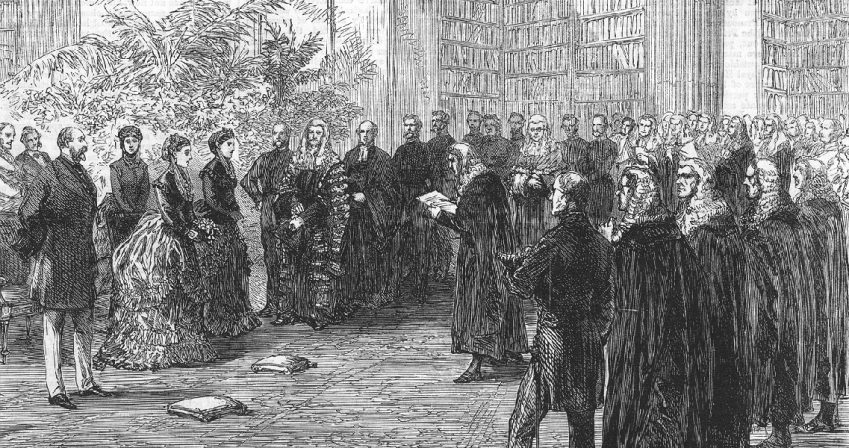

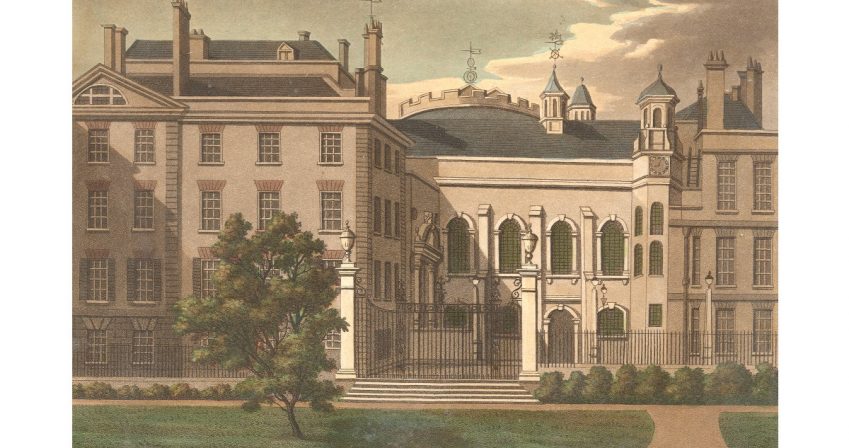
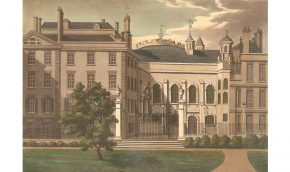
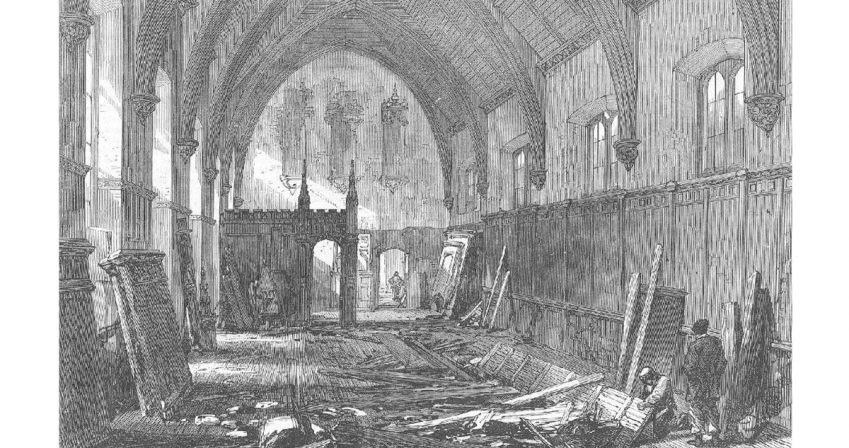
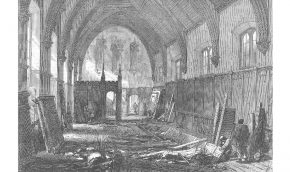
Princess Louise and Prince Christian received in the new Library. Illus. London News, 21 May 1870. Image © Professor Sir John Baker
Inner Temple Hall from the garden
Hall (old) - demolition - woodcut 1869 (ILN)
Eminent Inner Templars from these centuries included a prime minister (George Grenville), seven lord chancellors (Lords Harcourt, Macclesfield, Talbot, King, Bathurst, Thurlow, and Chelmsford), Lord Ellenborough, Chief Baron Pollock, Lord Bramwell, James Scarlett (later Lord Abinger), Daines Barrington (author of Observations on the Ancient Statutes), John Austin (the legal philosopher), Henry Hallam (the constitutional historian), Sir Edward Hyde East (author of Pleas of the Crown), Dr Lushington, and Sir James Stephen.
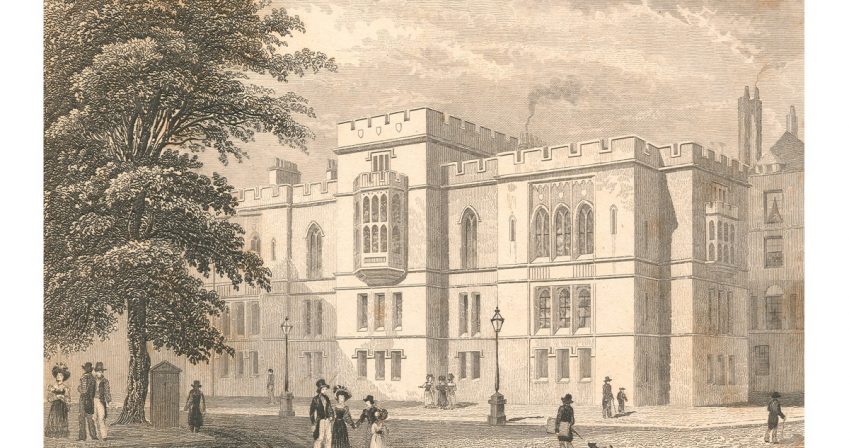
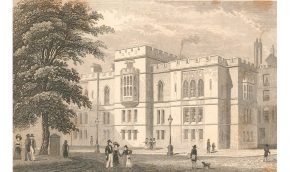
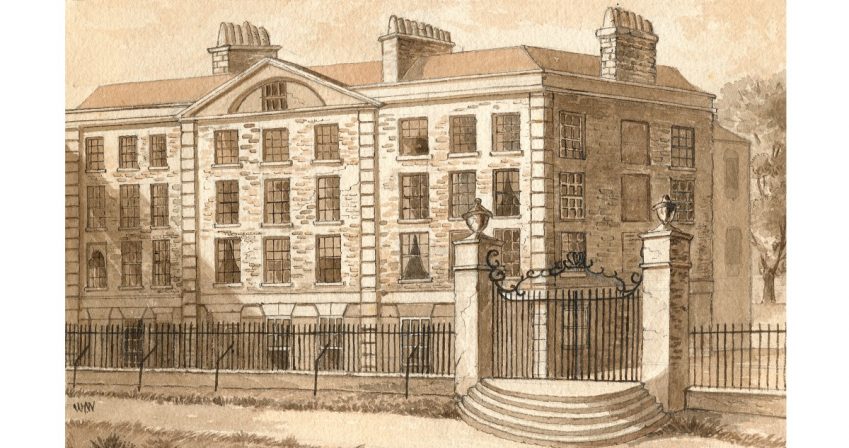
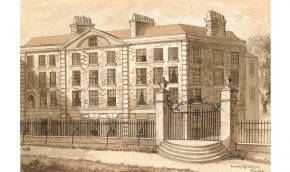
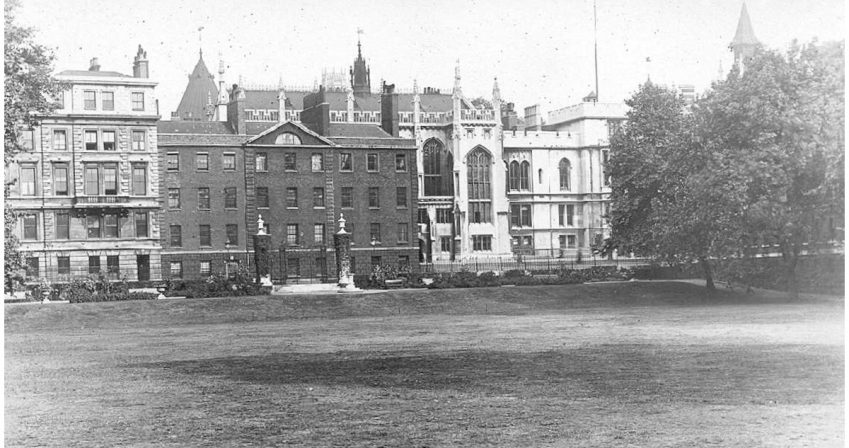
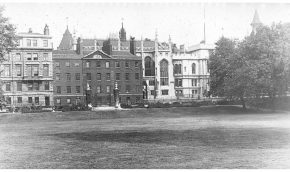
The new Library & Parliament Chambers by Tho H Shepherd, 1829
The old Crown Office
Crown Office Row, Hall etc. - view from Inner Temple Garden